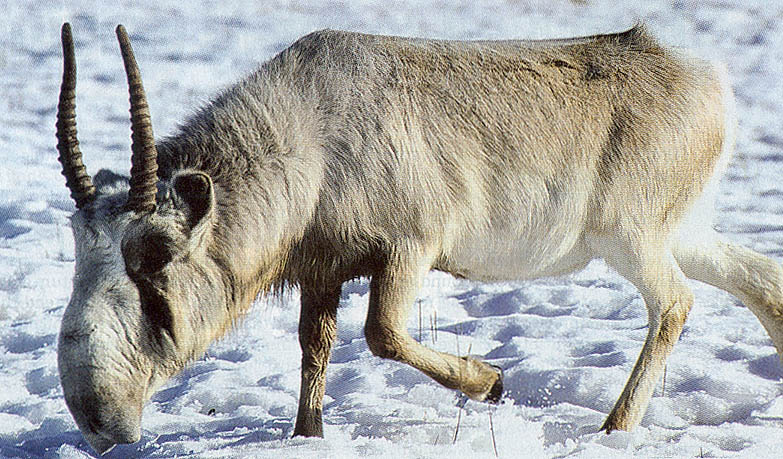The saiga antelope (Saiga tatarica) or simply saiga, is a species of antelope found only in Asia. It is rated as 'critically endangered' by the IUCN. It was found in many other places during the Ice Age.
Physical Features
 |
| A baby siaga |
Behavior and Diet
Saigas eat several species of plants, including some poisonous plants which other herbivores do not eat. They live in large herds that can cover quite a long distance. Saigas can swim across rivers and avoids rugged and steep terrain. Their mating season starts at November, where males (stags) will fight against each other for the females. The winner will get to lead a group of 7 to 50 group of females. In springtime, females give birth to young ones.
The siaga is classified as critically endangered. The population has reduced by 95% in the past 15 years. They are currently found in three particular areas in Kazakhstan, two isolated places in Mongolia and in Kalmykia, Russia. During the Ice Age, they were found in Alaska, North America, through the British Isles and Central Asia. They live in semi-desert steppes.
Conservation
In 1920, saigas were almost extinct. But, by 1950, they were recovered and there were more than 2 million in USSR itself. Today, only 50,000 are present globally in the wild and therefore, they are rated as critically endangered. They are hunted as their horns have medicinal properties. Since rhino hunting was banned, hunters started hunting saigas as their horns are equivalent to those of a rhino. Currently, Moscow zoo is the only zoo that have these antelopes.
Source of pic 1 and pic 2

No comments:
Post a Comment